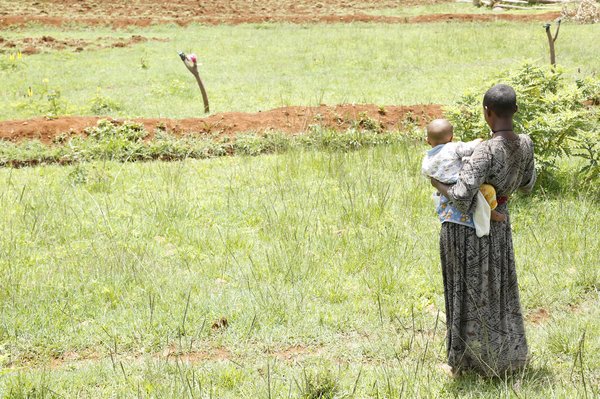As part of our Impact Initiatives, our team in Ethiopia have published a book titled, "Life History: Migration and Love". This originates from a unique encounter during fieldwork sessions in Hadiya, southern Ethiopia. The initial focus of the research was on interviewing successful returnees who had migrated to South Africa and managed to establish stable lives and businesses upon their return. However, the researchers sought to uncover the other side of the story, the experiences of migrants whose migrant journeys were interrupted, leading to their deportation from transit countries.
Working closely with the MIDEQ Ethiopia team, the book was edited to ensure that the author's writing style, arguments, and overall narrative remained authentic. Rather than subjecting it to a formal "professional editing" process, the aim was to preserve the authenticity of the work and make it relatable to the average Hadiya youth.
Introduction
The first rounds of our fieldwork sessions in Hadiya, southern Ethiopia, were dominated by stories of success. The returnees we interviewed came back from South Africa with money which served as seed capital to form of businesses and create stability back home. We wanted to get the other side of the story, and started searching for migrants who did not reach their destinations and ended up being deported from one of the transit countries. This targeted search gave us an opposite story: returnees who are destitute and are attempting to save up for a further attempt to reach South Africa.
It is as part of this endeavour to understand the nuances of the migrant journey that we learnt about Yonas Tadesse, also known as Johny. He has a furniture shop in Hossanna. We were informed that he was deported from Tanzania, but became successful in the furniture business. We decided to interview him the following day. We had a long informal discussion about his migration experience, detention, return and life now in Hosanna in his furniture shop on a fateful Saturday, fighting against time as we were scheduled to travel back to Addis on the same day. He was generous with his time, information as well as sharing emotional moments in prison. It is in the middle of such discussions that he dropped the unexpected note that he wrote his life history in the prison.
On our way back to Addis, we discussed that this self-history could only be one of the few written by a Hadiya migrant, and felt that it is very important to engage with it further. He agreed with the request on our next fieldwork, and we started reading and developing the publication for the book.
Capturing the migrant experience
The book, titled "Life History: Migration and Love" is a self-history written in Amharic by Johny. The book begins with a brief introduction which situates Johny's story within the broader context of the MIDEQ research, South-South migration and Ethiopian international migration.
Written in a Tanzanian prison, after he was intercepted by authorities, Johny learned Swahili and built relationships within the prison space. He also did some work for a Tanzanian prisoner to earn the money to buy the notebook, and to negotiate better conditions within the generally appalling prison.
The book reflects on his childhood, family and schooling. He meets his sweetheart and later girlfriend in high school. What dominates the discussion in the book is the memory of his girlfriend and the good times they spent. This in essence foregrounds the human touch and story in migration studies. It also presents the ideas and experiences of a migrant from the space of a prison, hardship and hopelessness.
The MIDEQ Ethiopia team helped edit the book without making significant changes to the writing style and arguments of the author. We wanted to the sentence structures, word choices and form of writing to speak to the average Hadiya youth, rather than editing through a ‘professional’ process for a different audience.
The book will be distributed to all high schools and relevant offices in Hadiya, where the greatest majority of Ethiopian migrants to South Africa originate from, and we will organise launch events in some districts. We will then use the launch as a tool for community conversation on the different sides of migration from a lived experience point of view.
Migrants as knowledge producers
As researchers, we tend to focus on the ‘objective’ factors and data. In the process, we take the human story out of the narrative. This state of affairs is further enabled by the fact that most irregular migrants rarely have a presence, as individuals or as a collective, in major policy, media or academic discussions. Thus, we often end up on conceptualising migration as movement of bodies only. The majority of pages of the book focus on the love he has for his girlfriend, the good times they spent and how much he misses her. Such human dimensions are ignored.
Although he was deported and considered as ‘failed’ and ‘unlucky’ by friends and local community for not reaching South Africa, Tadesse appears to have built his aspirations and capability for a good life while in prison. He started to assume leadership roles among Ethiopian prisoners—by teaching the Bible and as he learned Swahili. Upon his return to Ethiopia, he became more confident that if he persists he could get where he wants to. Now he advices others about migration and his experience. He is happy that he has created job opportunities for some young men, demonstrating that there are multiple endings to a migrant’s journey.



